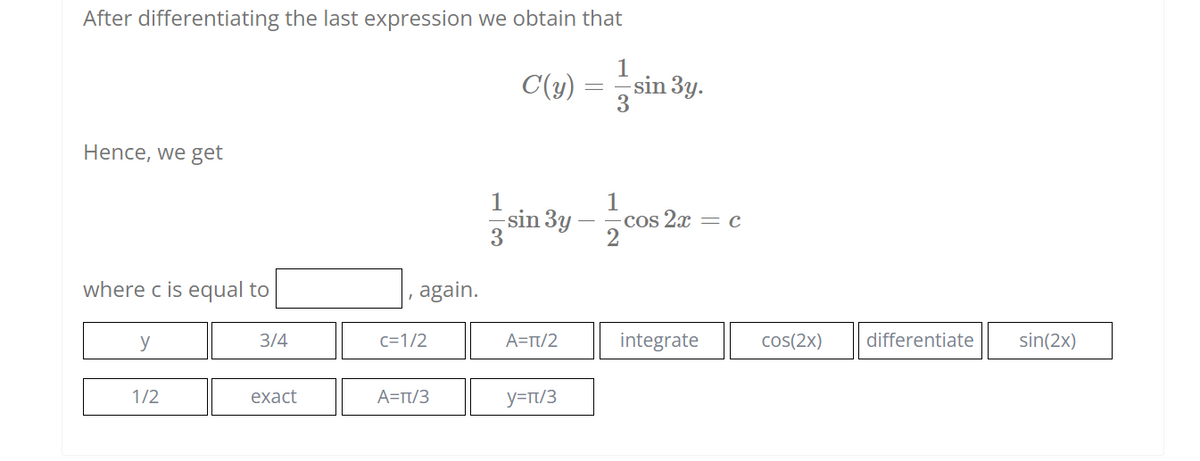After differentiating the last expression we obtain that 1 C(y) = sin 3y. Hence, we get 1 1 sin 3y-cos 2 3 2 where c is equal to y 3/4 A=TT/2 1/2 exact y=π/3 again. c=1/2 A=TT/3 -cos2x = c integrate cos(2x) differentiate sin(2x)
After differentiating the last expression we obtain that 1 C(y) = sin 3y. Hence, we get 1 1 sin 3y-cos 2 3 2 where c is equal to y 3/4 A=TT/2 1/2 exact y=π/3 again. c=1/2 A=TT/3 -cos2x = c integrate cos(2x) differentiate sin(2x)
Algebra & Trigonometry with Analytic Geometry
13th Edition
ISBN:9781133382119
Author:Swokowski
Publisher:Swokowski
Chapter7: Analytic Trigonometry
Section7.2: Trigonometric Equations
Problem 75E
Related questions
Question

Transcribed Image Text:After differentiating the last expression we obtain that
C(y)
3
= sin 3y.
Hence, we get
-sin 3y
1
Cos 2x = c
where c is equal to
again.
y
3/4
c=1/2
A=Tt/2
integrate
cos(2x)
differentiate
sin(2x)
1/2
exact
A=Tt/3
y=rt/3
Expert Solution
This question has been solved!
Explore an expertly crafted, step-by-step solution for a thorough understanding of key concepts.
Step by step
Solved in 2 steps

Recommended textbooks for you

Algebra & Trigonometry with Analytic Geometry
Algebra
ISBN:
9781133382119
Author:
Swokowski
Publisher:
Cengage

Functions and Change: A Modeling Approach to Coll…
Algebra
ISBN:
9781337111348
Author:
Bruce Crauder, Benny Evans, Alan Noell
Publisher:
Cengage Learning

Algebra & Trigonometry with Analytic Geometry
Algebra
ISBN:
9781133382119
Author:
Swokowski
Publisher:
Cengage

Functions and Change: A Modeling Approach to Coll…
Algebra
ISBN:
9781337111348
Author:
Bruce Crauder, Benny Evans, Alan Noell
Publisher:
Cengage Learning